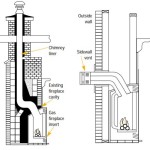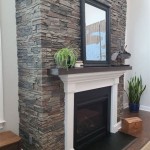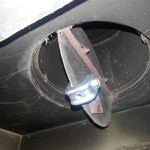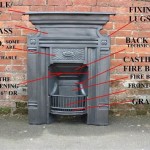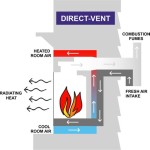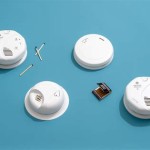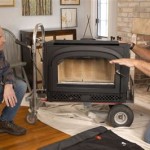Can You Cover Fireplace Vents? A Comprehensive Guide
Fireplace vents are designed to serve a critical purpose in the safe and efficient operation of a fireplace. They facilitate airflow, which is essential for proper combustion and heat distribution. However, homeowners sometimes consider covering these vents, often driven by concerns about energy efficiency, drafts, or aesthetics. This article will explore the purpose of fireplace vents, the potential ramifications of covering them, and alternative solutions for addressing related concerns.
It is crucial to understand the specific type of fireplace being discussed when addressing the issue of vent coverage. Fireplaces vary significantly in their construction and function, including traditional wood-burning fireplaces, gas fireplaces, and electric fireplaces. Each type relies on different mechanisms for operation and ventilation, and therefore, the implications of covering vents will differ accordingly.
A traditional wood-burning fireplace, for instance, requires a substantial amount of airflow to sustain combustion. This airflow is typically provided through a combination of the chimney, the damper, and, in some cases, dedicated vents located near the firebox. Gas fireplaces, on the other hand, often have a sealed combustion chamber and rely on specific venting systems designed for their particular fuel type. Electric fireplaces, which primarily serve an aesthetic purpose, typically do not have vents in the same sense as wood-burning or gas fireplaces, although they may have air intakes and outlets for heat circulation.
Before considering any modifications to a fireplace, including covering vents, it is essential to consult with a qualified professional. Fireplace specialists, HVAC technicians, and home inspectors can provide valuable insights into the specific requirements of a particular fireplace model and the potential consequences of altering its venting system. Furthermore, local building codes and regulations may dictate specific requirements for fireplace installation and maintenance, which must be adhered to.
Understanding the Purpose of Fireplace Vents
The primary function of fireplace vents is to regulate airflow, which is crucial for efficient combustion and safe operation. In a wood-burning fireplace, vents help provide the oxygen necessary for the fire to burn properly. Insufficient airflow can lead to incomplete combustion, resulting in the production of carbon monoxide, a colorless and odorless gas that is highly dangerous. Proper ventilation also helps to carry smoke and other combustion byproducts up the chimney, preventing them from entering the living space.
In some fireplaces, vents may also serve to circulate heated air. These vents are typically located above or around the firebox and are designed to draw cool air from the room into the fireplace, heat it, and then return it to the room. This convection process can help to improve the heating efficiency of the fireplace.
Gas fireplaces also rely on venting systems, although the specifics vary depending on the type of fireplace. Direct-vent gas fireplaces, for example, draw combustion air from outside the house and vent exhaust gases directly outdoors through a sealed system. This type of fireplace is generally considered safer and more efficient than vent-free gas fireplaces, which draw combustion air from the room and vent exhaust gases directly into the living space. Vent-free gas fireplaces are often subject to stricter regulations due to concerns about indoor air quality.
The location and design of fireplace vents are carefully determined by the manufacturer to ensure optimal performance and safety. Altering or obstructing these vents can disrupt the intended airflow patterns and potentially compromise the fireplace's functionality and safety.
Potential Ramifications of Covering Fireplace Vents
Covering fireplace vents can have several negative consequences, ranging from reduced heating efficiency to increased safety risks. The severity of these consequences depends on the type of fireplace, the extent to which the vents are covered, and the materials used to cover them.
One of the most significant risks associated with covering fireplace vents is the potential for carbon monoxide buildup. As mentioned earlier, insufficient airflow can lead to incomplete combustion, resulting in the production of carbon monoxide. If the vents are blocked, the carbon monoxide may not be properly vented through the chimney and could instead accumulate in the living space. Carbon monoxide poisoning can cause a range of symptoms, from headaches and dizziness to loss of consciousness and death.
Covering vents can also reduce the heating efficiency of the fireplace. If the vents are designed to circulate heated air, blocking them will prevent the fireplace from effectively distributing heat throughout the room. This can result in a colder room and increased energy consumption, as the heating system has to work harder to maintain a comfortable temperature.
Furthermore, covering vents can potentially damage the fireplace itself. Overheating can occur if the vents are blocked, as the heat generated by the fire cannot dissipate properly. This can lead to cracks in the firebox, damage to the venting system, and even a fire hazard. The use of combustible materials to cover the vents can also pose a significant fire risk.
In the case of gas fireplaces, covering vents can disrupt the delicate balance of the combustion process. This can lead to incomplete combustion, the production of carbon monoxide, and potentially dangerous gas leaks. It is especially important to avoid covering any vents or openings on a gas fireplace, as they are essential for safe and efficient operation.
Alternative Solutions for Addressing Concerns
While covering fireplace vents is generally not recommended, there are alternative solutions for addressing common concerns related to fireplaces, such as energy efficiency, drafts, and aesthetics. These solutions typically involve improving the fireplace's performance or addressing the underlying causes of the problems.
To improve energy efficiency, consider installing a fireplace insert or retrofitting the fireplace with a more efficient damper. Fireplace inserts are self-contained units that fit inside the existing firebox and provide more controlled combustion and heat distribution. A well-sealed damper can prevent drafts when the fireplace is not in use, reducing heat loss through the chimney.
Another option is to insulate the fireplace walls and chimney. This can help to reduce heat loss and improve the overall energy efficiency of the home. Professional contractors can install insulation materials that are specifically designed for high-temperature environments.
To address drafts, inspect the fireplace and chimney for any cracks or gaps that may be allowing air to enter the home. Seal any openings with appropriate caulk or sealant. A chimney cap can also help to prevent drafts by blocking wind from entering the chimney.
For aesthetic concerns, consider updating the fireplace surround or mantel. This can significantly improve the appearance of the fireplace without compromising its functionality or safety. There are many different styles and materials to choose from, allowing homeowners to create a look that complements their décor.
Furthermore, regular maintenance and cleaning are essential for ensuring the safe and efficient operation of a fireplace. Schedule annual inspections and cleanings to remove creosote buildup from the chimney and to identify any potential problems. Proper maintenance can help to prevent fires, carbon monoxide poisoning, and other safety hazards.
Before implementing any of these solutions, it is always best to consult with a qualified professional. A fireplace specialist or HVAC technician can assess the specific needs of the fireplace and recommend the most appropriate course of action.
Ultimately, while the temptation to cover fireplace vents might arise from concerns about energy efficiency or aesthetics, it is crucial to prioritize safety and functionality. Understanding the purpose of the vents and the potential consequences of covering them is essential for making informed decisions about fireplace maintenance and modifications. By exploring alternative solutions and consulting with professionals, homeowners can achieve their desired outcomes without compromising the safety or performance of their fireplaces.

Our Diy Fireplace Makeover Framing Vents Part 2 Four Generations One Roof Blog

How Can I Cover These Ugly Heat Vents In My Wood Burning Fp

Remove Or Cover Up Old Heatilator Vents

Fireplace Makeover Reveal Beneath My Heart

Our Diy Fireplace Makeover Framing Vents Part 2 Four Generations One Roof Blog

Fireplace Makeover Reveal Beneath My Heart

Remove Or Cover Up Old Heatilator Vents

Flush Fireplace Vent Luxe Fittes

Termination Cap Cover For Direct Vent Fireplace Draft Stopper

Any Fireplace Experts Out There On Houzz Need Help With Ugly Vents
Related Posts

